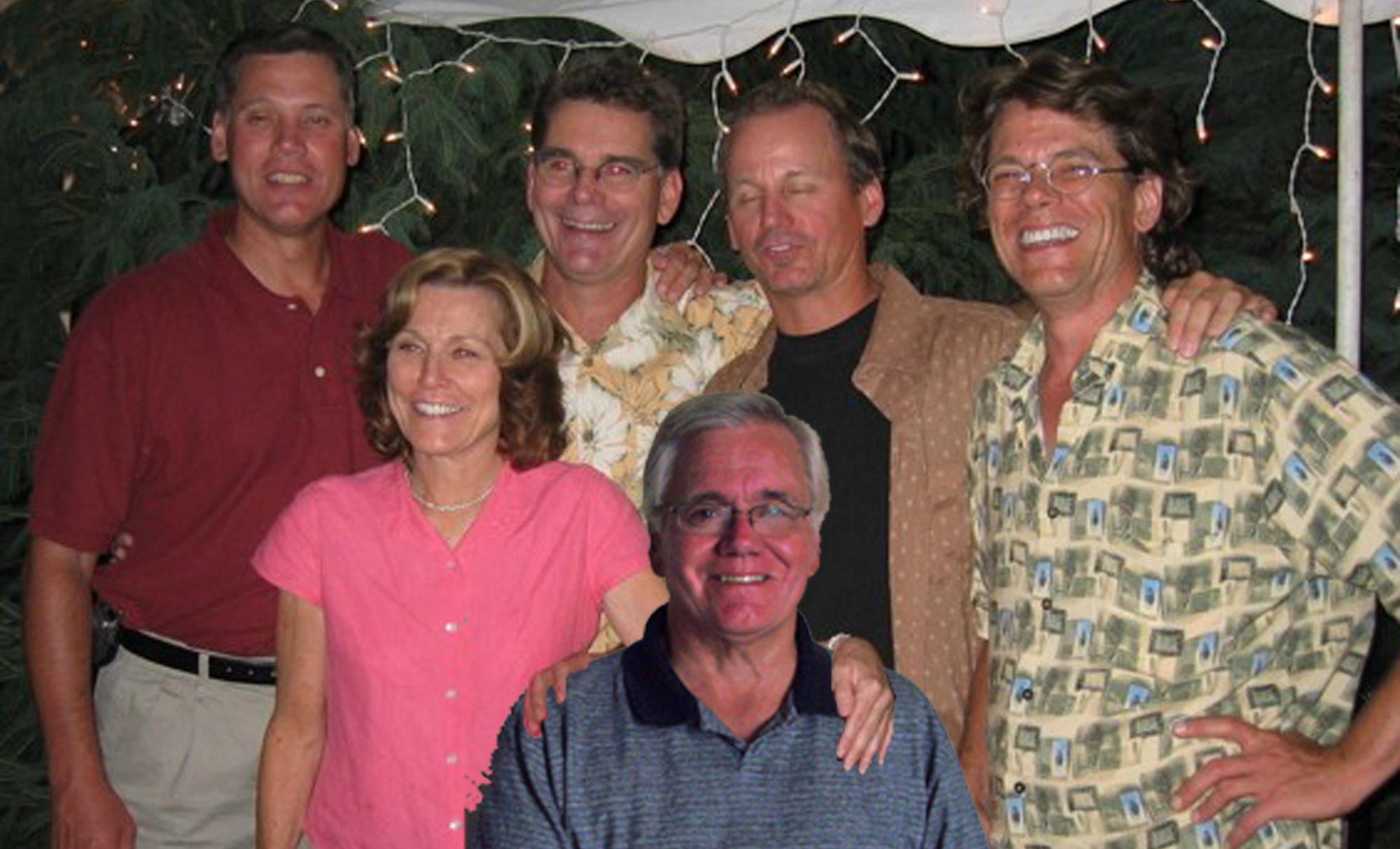Fasten your seat belts folks, this is going to be a long one.
First, a little background. Rec Hall is short for Recreation Hall, a gymnasium on Penn State’s campus. It was built in 1929 and was the home for Penn State basketball until 1996 when Penn State opened the Bryce Jordan Center, a modern multi-purpose arena. Rec Hall is still the home for Penn State volleyball, wrestling, and gymnastics. This weekend, PSU and Rec Hall are hosting the NCAA men’s volleyball Final Four.

Rec Hall and volleyball hold a special place in my heart. My first trip ever to Penn State was in 1963 to play in the PIAA State Volleyball Championships. It was a double elimination tournament with play starting Saturday morning around 9am. Central Bucks was the District 1 Champion and we drew Peobody High, District 7 and defending State Champion in the opening round. We were in awe of Peobody and quickly went down to defeat.
We fell into the loser’s bracket but fought our way back with a couple of victories but couldn’t continue the streak. By about 2 in the afternoon we were eliminated. As we walked back to our hotel, we passed a fraternity, Phi Gamma Delta, that was just a block from Rec Hall. It turned out that Phi Gam was holding their annual big party, Fiji Island Weekend, that day. Here were all these guys and girls running around in bathing suits, grass skirts, and bikinis sipping all sorts of alcoholic concoctions. I saw this guy passing by an upstairs window with a girl thrown over his shoulder. I turned to the other guys on the team and said “I think I could learn to like it here”. Little could I have imagined.
That’s just a little Rec Hall and me background. Now some PSU and volleyball background. While women’s volleyball has a presence across the country, the elite men’s teams are almost all from the West, particularly from California. Penn State is one of the very few schools east of the Rockies who have a quality program. Actually, there’s little doubt that PSU is the premiere program outside the West.
To show you how dominant the western schools are, take note of these facts. Penn State was the first school from the east to ever win a match against a California school when we beat one (I forget which) in a regular season match in the 70s. In 1982, Penn State upset USC in five games in the NCAA semifinals to be the first non California school to ever make the finals of the NCAAs (Karch Kiraly and UCLA pounded us in the championship game). We had a little advantage in that match against USC in that the Final Four was held in Rec Hall, so it was actually a home game for us.
In 1994, Penn State won the NCAA title to be the first team from west of the Rockies to win the NCAAs. In the following year, we made it back to the finals (becoming the first non-western school to ever make the championship game two years in a row) only to lose to UCLA again.
The path to the Final Four in volleyball is a little unique. There are basically just three leagues that play men’s collegiate volleyball – the Mountain Pacific Sports Federation (MPSF), the Midwestern Intercollegiate Volleyball Association (MIVA), and the Eastern Intercollegiate Volleyball Association (EIVA). The winners of those leagues’ tournaments get automatic bids to the Final Four. The fourth spot is given to an at-large bid which has ALWAYS gone to a western school (once again showing the dominance of the western schools in men’s volleyball.
Because of that structure Penn State only has to win the EIVA tournament title to get into the Final Four. As dominant a program as we have for an Eastern school that is usually fairly easy. PSU has appeared in 21 Final Fours and we are second to only UCLA in that regard. However, getting past that semifinal game isn’t so easy. Coming into last night we had lost ten straight semifinal matches since our last win in 1995.
PSU has been pointing to this weekend for years. We brought in an outstanding recruiting class four years ago and we knew that we were going to host the 2006 Final Four. Everything knew that 2006 was going to be the year that we made another run for the championship. So the expectations for this year were high and the pressure was on the team to do well. The pressure might actually have been a little much because the team has not played well, at least by our standards, all year.
They opened the season up 1-5. They even lost at home to a non-Western school, Ball State. They had other questionable losses throught the season to schools like Ohio State, George Mason, and IPFW. Things were starting to look a little dicey for maybe even making it to the Final Four. Then they got a little help.
A week ago, PSU was expected to have a difficult EIVL title match against George Mason, who had knocked off PSU a month earlier in a league match. But the St Francis Red Flash pulled off a huge upset in the semifinals to knock George Mason out of the tournament. That gave PSU an easy opponent to claim the EIVL spot in the Final Four. The Nits responded with an quick 3 game sweep.
That set up the Final Four participants as UC-Irvine, UCLA, IPFW, and Penn State (read more about the participants here). To no one’s surprise, PSU was seeded fourth for the event. We had already faced all three other opponents during the year, losing to each (UCI and UCLA swept us, IPFW beat us 3-2). As the fourth seed, we drew the #1 seed and #1 nationally ranked UC-Irvine Anteaters, who were making their first ever appearance in the Final Four.
So while expectations for the season were high, our play during the season kind of reset everyone with much lower expectations coming into the weekend. That soon changed.
Penn State played absolutely flawlessly in the first 15 minutes of game 1 and eked their way to a 14-11 lead. That got the team’s confidence up and they fought their way to a hard earned 32-30 victory. UC Irvine fought off three game points before falling. At this point, I’m thinking “however this turns out, the kids have accredited themselves well with this win”. Things were just getting started though.
In game two, Penn State just overpowered the Anteaters and they raced to a 30-23 victory. Now I’m starting to think just like I did midway through the second half of our Kentucky hoops game in 2000. You know, the “Holy mackeral, we might actually beat these guys.
Game three was a battle. The UCI players were fighting for their volleyball lives and our kids were giving them no quarter. With a 29-28 lead, senior captain Nate Meerstein was serving for the match. Incredibly, he airmailed the ball about 20 feet over the endline, giving the Anteaters life. They responded and won 33-31.
Game four was a problem. Meerstein was clearly flustered with his service error in game three and all of a sudden he couldn’t get his serve in. To his credit, he continued to be an absolute monster on the front line recording over a dozen kills and blocks during the match. The Nits battled valiantly but went down to a 30-27 defeat.
That set up the dramatic game five. Matches that go the full five games are settled by a 15 point final game. That leaves little margin for error, so Meerstein wisely abandoned his jump serve and went to a floater for the remainder of the match. Shaking off their back to back losses, the Nits jumped out to a quick 2-0 lead. That set the tone for the match. We’d get a two point lead but UCI would come back to tie it up (the match was tied at 2-2, 6-6, and 12-12).
PSU pulled ahead 14-13 and had freshman Max Holt serving for the match when UCI called a timeout. I looked at my watch and realized that the match was now almost three hours long and my TiVo was about to quit recording even though I had padded it with a extra hour. Right at that point, the lights went out. And I don’t mean figuratively, I mean literally. Yup, a partial power failure (so they say, frankly I think someone forgot to turn off the timer that shuts the Rec Hall lights off at 11 PM) killed half the lights in the building.
Things like this only happen in Hollywood scripts but there it was. Because of the type of lighting, it takes about 10-15 minutes to restart the lights. UCI couldn’t have asked for anything better. How long does a basketball timeout last? How about a football timeout? 2-3 minutes max. Teams use timeouts to ice players at the free throw line, or kickers getting ready for game winning field goals. Here, UCI effectively got a 15 minute timeout to ice a freshman who was serving for a berth in the NCAA championship game.
NO PROBLEM.
Max aced the serve and we move on to play UCLA for the title on Saturday night.
Read more about the game here.
Photos from the game can be viewed here.
I can actually be seen, sort of, in a crowd shot from the photo gallery. I’ve cropped my out of the photo, hence the little white spot, and blown it up slightly. Admittedly, I’m not quite recognizable, but it is me.











